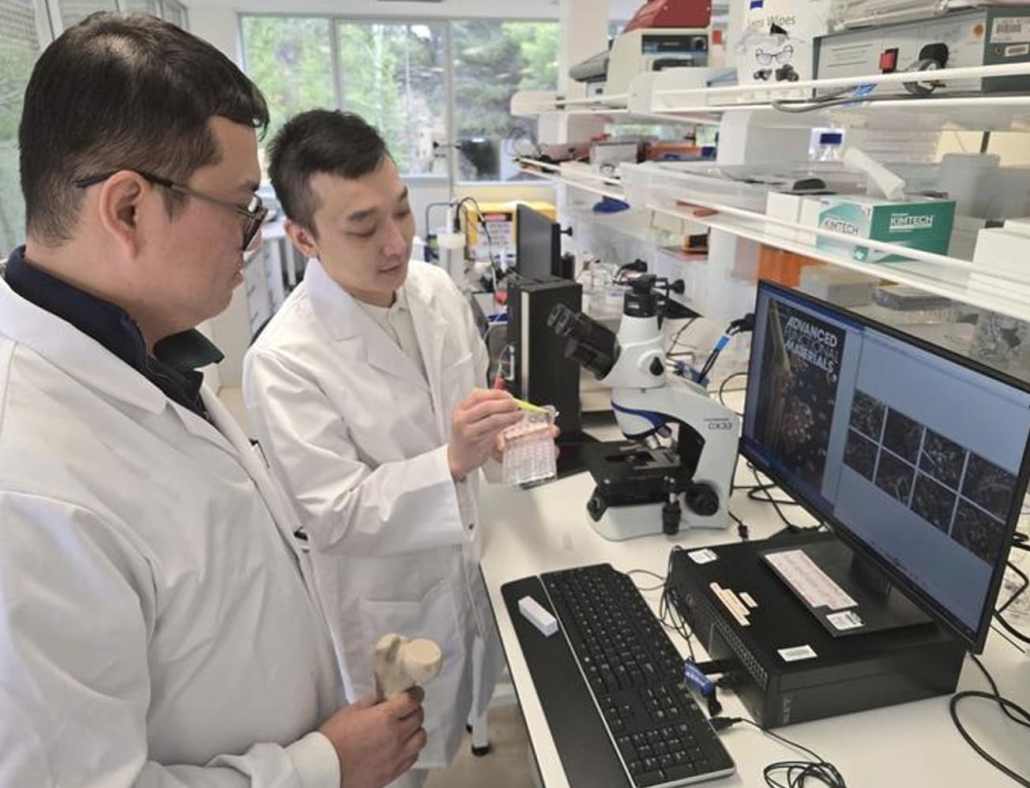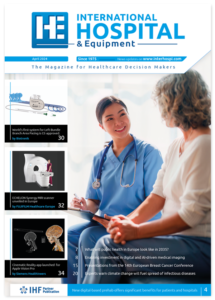Novel liquid metal implants combat infection and boost bone healing
Researchers have developed a pioneering 3D bioceramic scaffold embedded with silver-gallium liquid metal nanoparticles that simultaneously prevents bacterial infections and promotes bone regeneration. The breakthrough technology offers a non-antibiotic solution to one of orthopaedic surgery’s most persistent challenges, with potential to transform outcomes for high-risk patients.
A novel biomaterial combining liquid metal nanoparticles with bioactive ceramics has emerged as a dual-action solution for orthopaedic implants, addressing both antimicrobial resistance and bone integration challenges that plague current surgical interventions.
The research team at Flinders University’s Biomedical Nanoengineering Laboratory has successfully integrated silver-gallium (Ag-Ga) liquid metal nanoparticles into a hydroxyapatite scaffold, creating what they describe as the first load-bearing, bioactive ceramic scaffold incorporating liquid metal-based nanomaterials. The findings were published recently in Advanced Functional Materials.

Associate Professor Vi-Khanh Truong and Dr Ngoc Huu Nguyen at the Flinders University Biomedical Nanoengineering Laboratory.
Dual functionality addresses critical clinical needs
“This new 3D bioceramic scaffold embedded with silver-gallium liquid metal nanoparticles offers a dual-function biomaterial that simultaneously combats persistent infection and promotes bone regeneration,” says Associate Professor Vi-Khanh Truong, lead author of the study. “In our latest research we show our scaffolds significantly reduce bacterial colonisation at implant sites and promote healthy bone integration, confirming both antibacterial efficacy and regenerative capability in a physiologically relevant setting.”
Implant-associated infections represent a substantial clinical burden in orthopaedic surgery, with systemic antibiotics increasingly ineffective due to antimicrobial resistance. Conventional antibiotic-loaded bone cements typically provide short-lived protection with limited antimicrobial spectrum, leaving a critical gap in treatment options.
Sustained antimicrobial protection without antibiotics
The innovative scaffold distinguishes itself from conventional approaches through its mechanism of action. Dr Ngoc Huu Nguyen, a postdoctoral researcher instrumental in formulating the liquid metal-based bioceramic scaffold, explains: “Our approach differs fundamentally from conventional antibiotic-loaded materials. Instead of burst release, the scaffold provides sustained, localised antimicrobial protection while actively supporting bone healing.”
The research demonstrates efficacy against multiple clinically significant pathogens, including Staphylococcus aureus, methicillin-resistant S. aureus (MRSA), Pseudomonas aeruginosa, and small colony variants – bacterial forms notoriously resistant to conventional antibiotic therapy. This broad-spectrum activity addresses a critical need in clinical practice, where polymicrobial infections frequently complicate surgical outcomes.
Enhanced biocompatibility and bone integration
Beyond antimicrobial properties, the scaffold demonstrates superior biocompatibility with bone tissue. The research confirms that the material promotes healthy bone integration whilst maintaining its load-bearing capacity – essential characteristics for orthopaedic applications where mechanical stability determines surgical success.
Professor Krasimir Vasilev, senior co-author on the study, notes that the research successfully transitions previous surface coating technologies into a fully integrated regenerative scaffold platform. “This innovation helps to create a new generation of bone repair materials that can prevent infection without relying on antibiotics, while also enhancing tissue integration and healing,” says Professor Vasilev, Professor in Biomedical Nanoengineering.
Broad clinical applications
The technology presents multiple potential applications across orthopaedic and trauma surgery. Researchers envision its use as antimicrobial bone void fillers for infected fractures, spinal fusions, and revision surgeries. The material could also enable development of next-generation antibiotic-free bone cements with ion-mediated antimicrobial action.
Three-dimensional printing capabilities open possibilities for patient-specific scaffolds addressing craniofacial reconstruction, long bone defects, and tumour resection sites. The technology may prove particularly valuable in infection-prone environments such as diabetic foot complications and oncology-related bone loss, where current treatment options remain limited.
Clinical significance
“Our technology offers a non-antibiotic, dual-function solution that can dramatically improve surgical outcomes – particularly for high-risk and compromised patients,” Associate Professor Truong emphasises.
The research addresses an urgent clinical need as antimicrobial resistance continues to limit treatment options for implant-associated infections. By eliminating dependence on antibiotics whilst simultaneously enhancing bone regeneration, the technology represents a paradigm shift in orthopaedic biomaterials design.
The multi-institutional collaboration between Flinders University, Shandong University, and partner institutions demonstrates the global relevance of this innovation. As the technology progresses towards clinical translation, it holds promise for reducing infection rates, shortening recovery times, and improving long-term implant longevity.
Reference
Nguyen, N. H., Zhang, P., Pattar Kadavan, F. S., et. al. (2025). Multifunctional hydroxyapatite coated with gallium liquid metal-based silver nanoparticles for infection prevention and bone regeneration. Advanced Functional Materials, 35(37). https://doi.org/10.1002/adfm.71453

